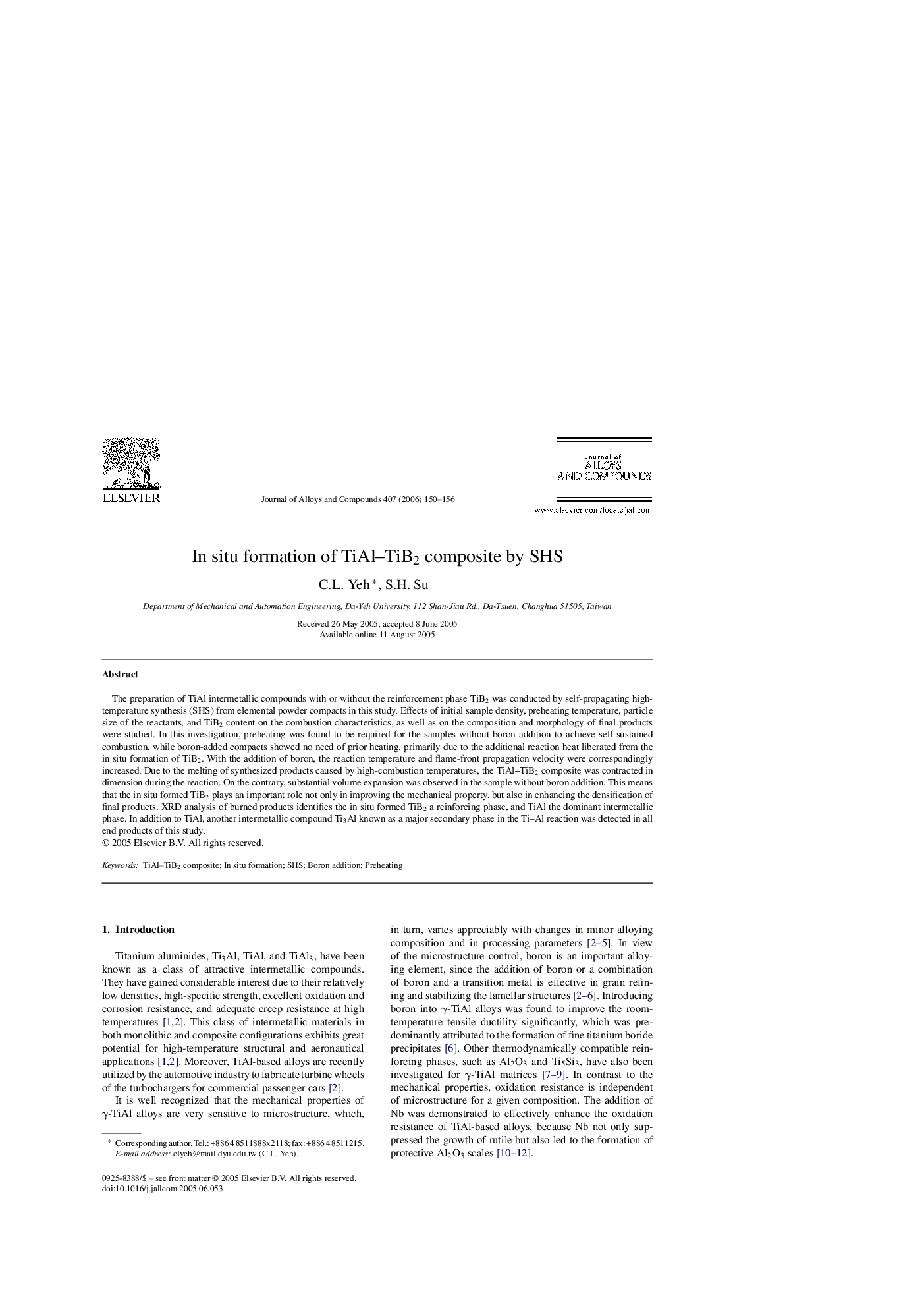| Article ID | Journal | Published Year | Pages | File Type |
|---|---|---|---|---|
| 1628005 | Journal of Alloys and Compounds | 2006 | 7 Pages |
The preparation of TiAl intermetallic compounds with or without the reinforcement phase TiB2 was conducted by self-propagating high-temperature synthesis (SHS) from elemental powder compacts in this study. Effects of initial sample density, preheating temperature, particle size of the reactants, and TiB2 content on the combustion characteristics, as well as on the composition and morphology of final products were studied. In this investigation, preheating was found to be required for the samples without boron addition to achieve self-sustained combustion, while boron-added compacts showed no need of prior heating, primarily due to the additional reaction heat liberated from the in situ formation of TiB2. With the addition of boron, the reaction temperature and flame-front propagation velocity were correspondingly increased. Due to the melting of synthesized products caused by high-combustion temperatures, the TiAl–TiB2 composite was contracted in dimension during the reaction. On the contrary, substantial volume expansion was observed in the sample without boron addition. This means that the in situ formed TiB2 plays an important role not only in improving the mechanical property, but also in enhancing the densification of final products. XRD analysis of burned products identifies the in situ formed TiB2 a reinforcing phase, and TiAl the dominant intermetallic phase. In addition to TiAl, another intermetallic compound Ti3Al known as a major secondary phase in the Ti–Al reaction was detected in all end products of this study.
